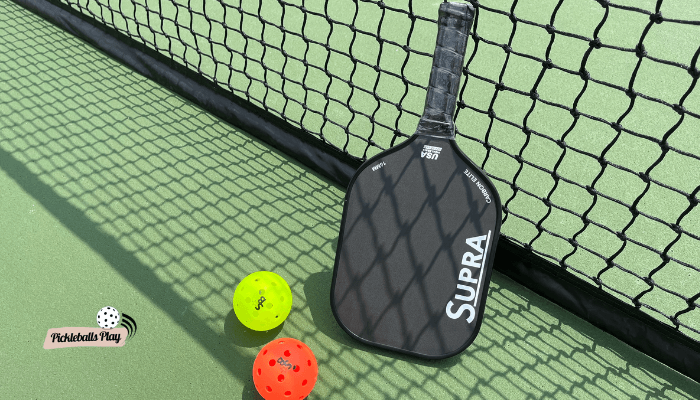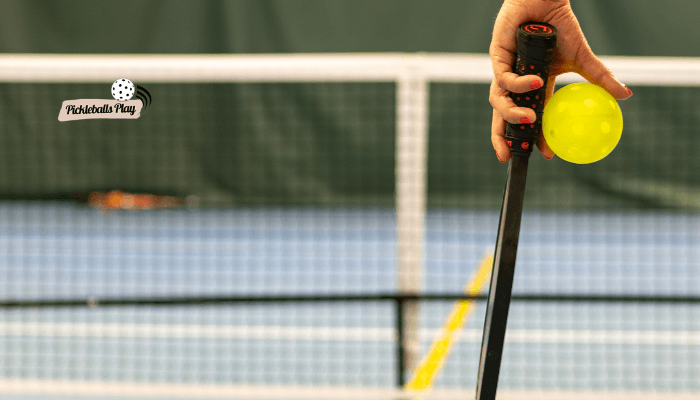When it comes to pickleball, the serve is the game-changer. It can make or break a play depending on whether it’s done legally or illegally. So, let’s dive deep into the world of legal and illegal serves in pickleball and get you ready to serve up success!
Legal Serves in Pickleball
Legal serves in pickleball are the ones that follow all the guidelines set by the USA Pickleball Association (USAPA), the governing body of the sport. These guidelines ensure fair play and an even playing field for all competitors.

So, what are these guidelines? First, you can only serve from one side of the court. Your feet must stay behind the baseline, and you can only use one hand to hold your paddle. These rules ensure consistency and fairness in serving.
There are two main types of legal serves in pickleball: the underhand serve and the forehand serve. Each requires a different technique but can lead to successful points when executed correctly.
The Underhand Serve
The underhand serve is considered one of the easiest and more beginner-friendly serves in pickleball. To execute it, stand behind the baseline with your feet parallel or slightly staggered. Hold your paddle at waist level, facing downwards, and toss or drop the ball no higher than 6 inches. Then, strike it forward before it bounces on your side of the court. The ball should land diagonally from where you hit it to avoid faulting.
The Forehand Serve
The forehand serve is the most common serve in pickleball, used by players of all levels. Stand on the right side of your court, facing your opponent’s court. Throw the ball up and hit it with your paddle in a forward motion across your own service line and into your opponent’s court diagonally.
Illegal Serves in Pickleball
Now, let’s talk about the serves that don’t play by the rules. Illegal serves in pickleball occur when any of the serving parameters are not met. These serves can lead to arguments and penalties on the court, so it’s important to know what they are and avoid them.
The Overhead Serve
An overhead serve happens when a player strikes the ball with an upward motion, trying to hit it over the net without it bouncing on their side of the court first. This type of serve is not allowed as it gives an unfair advantage to the server and makes it difficult for the opponent to return the ball.
The Double Hit Serve
A double hit serve occurs when a player hits the ball more than once with their paddle before it crosses over to their opponent’s court. Whether intentional or accidental, this serve results in an immediate loss of points for the serving team. Continued violations can lead to further penalties or even disqualification from the game or tournament.

The Carry or Throw Serve
The carry or throw serve, also known as the push or lob serve, involves throwing the ball up into the air or carrying it with your paddle before hitting it over the net. This type of serve is illegal and should never be attempted in pickleball. If caught, the opposing team can be awarded a point.
Penalties for Illegal Serves
Breaking the rules comes with consequences, and illegal serves in pickleball are no exception. Depending on the severity of the violation, penalties can range from losing a point to warnings or even expulsion from the game or tournament.
Remember, fair play and adherence to the rules are crucial in pickleball. Avoid illegal serves, stay within the guidelines, and enjoy the game to its fullest!
Conclusion : Legal and Illegal Pickleball Serves
Pickleball serves can be tricky to master, as there are specific rules governing both legal and illegal serves. A legal serve must be made diagonally, with the paddle below the waist and the server’s feet behind the baseline. The ball should be hit cleanly and travel without bouncing into the opposing side’s service court.
Illegal serves include foot faults, serving from the wrong court, and double-bouncing the ball. While the serve rules may seem complex at first, with practice they will become second nature. Mastering both the legal and illegal serves is crucial for pickleball success. With an understanding of the definitive dos and don’ts for serving, you’ll be sure to avoid faulting and start earning points for your team.
Whether you’re a beginner learning the basics or a competitive player honing your skills, keep this guide handy as a pickleball serving resource.